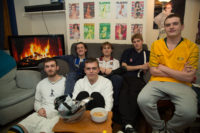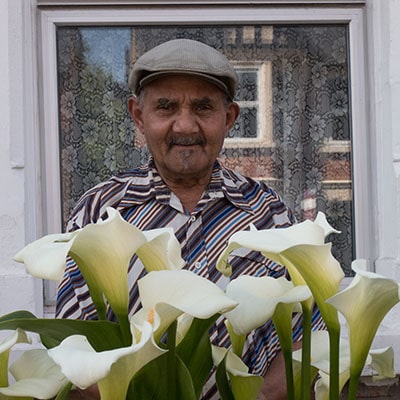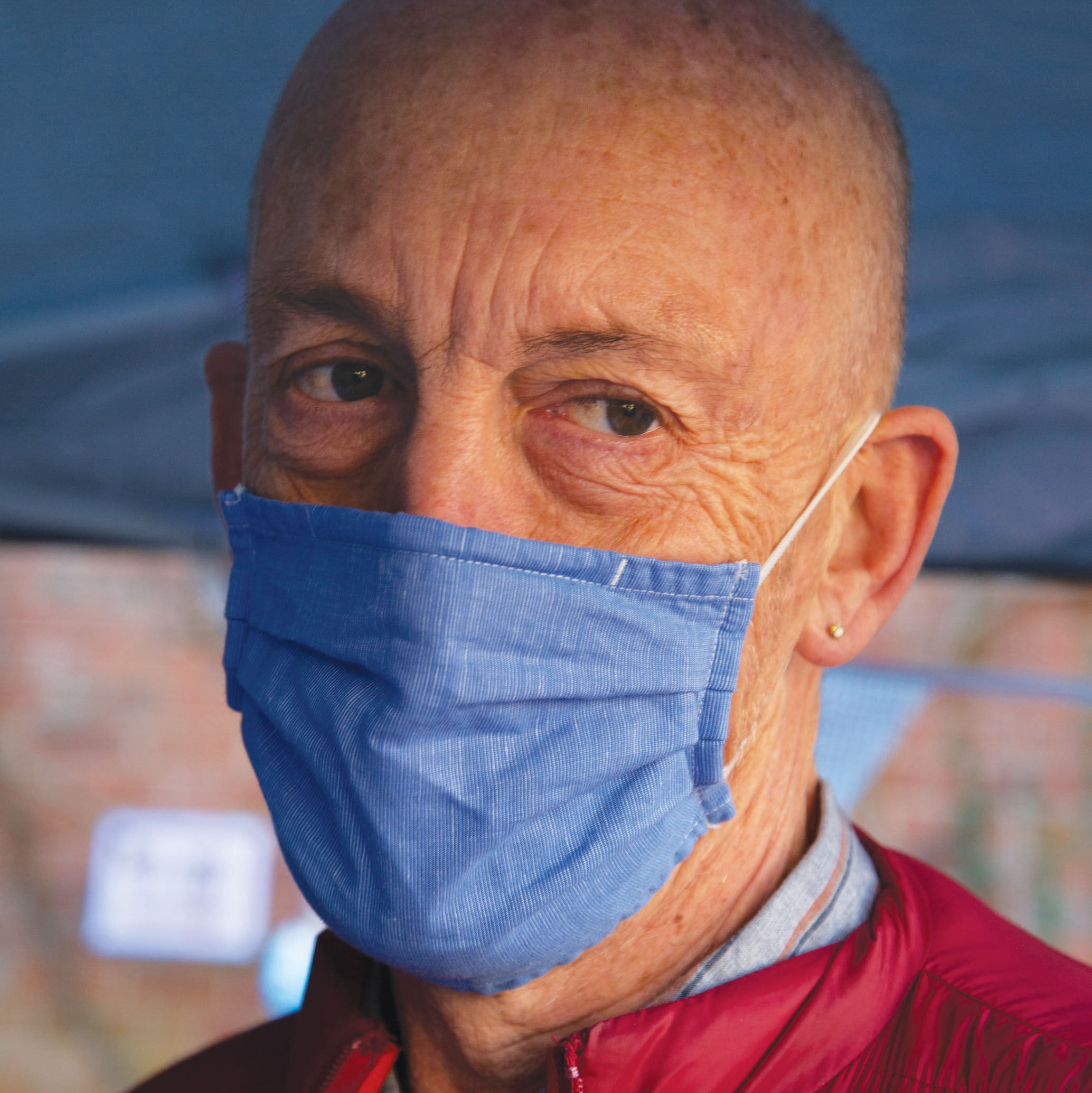Masculinities: liberation through photography
I’d been looking forward to going to this exhibition which opened on 20 February, but didn’t get the opportunity to visit before lockdown, so I was delighted to get to see it just a couple of days before the end of its extended re-opening on 23 August. The subject is certainly topical in the context of the #MeToo movement, the rise of (male) authoritarian populists across the world, and the distortions of masculinity in the service of everything from consumer culture to the ideology of the alt-right (incels etc).
I was lucky in a way because blockbuster photography shows these day can be absolutely rammed. I could barely see the pictures in the Don McCullin exhibition at Tate Britain last year for all the people, but concerns over COVID which have kept London pretty quiet, and the introduction of reduced entry numbers and strict ‘social distancing’, made for a rather pleasant viewing environment. In many cases this was just as well as getting up close to the exhibits was an essential part of appreciating them. The exhibition is huge, sprawling even, with over 300 photogrpahs and films by over 50 artists. On such a scale it can’t help but be fascinating, and many of the contributions are strong, original and thoughtful. But, perhaps because of its size and ambition, it doesnt quite hang together.
What is immediately striking is that the exhibition is about men.  Obvious really, but the ‘male gaze’ is so dominant in art and photography that we forget that most of it is directed at women. In putting this exhibition together the curators have attempted to subvert, or at least challenge and re-frame this male gaze. So there is a lot of photography by and about gay men, particularly white American gay men. Robert Mapplethorpe is one of the stars in that firmament and ironically his best photograph here is of a woman, Lisa Lyon, the women’s world pro bodybuilding champion in 1980, naked, and in heroic athletic pose. Right beside her are pictures of Arnold Schwarzenegger (not naked). The pose is the same, the impact somewhat different. With his extraordinarily over developed biceps he looks ridiculous. More substantial is Hal Fischers ‘Gay Semoitics’ (1977) with different steroetypes marked up with their various signifiers – lots of keys, leather accoutrements and different coloured handkerchiefs. But it is amusing because it is so dated. We know all that now.
Obvious really, but the ‘male gaze’ is so dominant in art and photography that we forget that most of it is directed at women. In putting this exhibition together the curators have attempted to subvert, or at least challenge and re-frame this male gaze. So there is a lot of photography by and about gay men, particularly white American gay men. Robert Mapplethorpe is one of the stars in that firmament and ironically his best photograph here is of a woman, Lisa Lyon, the women’s world pro bodybuilding champion in 1980, naked, and in heroic athletic pose. Right beside her are pictures of Arnold Schwarzenegger (not naked). The pose is the same, the impact somewhat different. With his extraordinarily over developed biceps he looks ridiculous. More substantial is Hal Fischers ‘Gay Semoitics’ (1977) with different steroetypes marked up with their various signifiers – lots of keys, leather accoutrements and different coloured handkerchiefs. But it is amusing because it is so dated. We know all that now.
There is a very substantial collection of photographs of men in the military. There is a sense that some of the pictures are attempting to show them as vulnerable as well as, well… militaristic; Israeli solders dozing on a bus, Taliban soldiers dressing up in elaborate costume and heavily made up, apparently vulnerable, until you clock the pistols and AK47’s in almost all the shots – killing you softly with kohl. There are a few other military types as well – mainly Nazi’s in uniform – or more accurately actors dresed as Nazis, that Hollywood obsession. And there are a fair few cowboys too. Masculinity as extreme masculinity. But oddly the exhibition doesn’t concentrate on men in other work contexts. In fact the world of work is almost entirely absent. It is odd because the debates of the past couple of decades have been about the ‘feminisation of the workplace’ as mining, heavy industry and other traditionally male occupations have been replaced by more office based, retail, leisure, and hi-tech ones. Result, a lot more men are to be found in what were traditionally female contexts and caring professions, and the nature of work has changed too, as women become engineers, doctors, and leaders in the creative industries, including film and photography. Men at home aren’t well represented either, none experimenting with cooking, let alone childcare. But there are some wonderful if not exactly new series, including Richard Billingham’s 1996 ‘Ray’s a laugh’, his tender portrait of his mother and alcoholic father stuck in their flat in the Black Country, and Duane Michals’s ‘The return of the Prodigal Son’, a set of just five photographs where the son returns home naked, and in the space of those pictures the father divests himself of his clothes, ending with the son clothed and the father naked. The late Masahise Fukase really pulls it off with with a magnificent series of black and white pictures of him with his ageing father. So does Larry Sultan, with pictures of his also quite elderly dad, practicing his golf swing, trying to fix the vacuum cleaner and standing forlornly by an empty swimmig pool. Paternal love.
Women photographers don’t play a very big part, but two British photographers make an impact, Anna Fox with ‘My mothers cupboards and my father’s words’, terrifying for the banality of the cupboards contents juxtaposed with the violence of the words, and Karen Knorr’s ‘Gentleman’, photographs shot in 1980s London gentleman’s clubs. Like Fox she pairs the images with words, words that amplify the sense of (white) male entitlement. One has a black man carrying a silver tea service accompanied by the words ‘Men are interested in Power. Women are interested in Service’. Another, picturing two gents taking tea says, ‘Newspapers are no longer ironed. Coins no longer boiled. So far have standards fallen.’ In a way the exhibition might give the impression to a visitor from another planet (or perhaps even to many women on this one) that men don’t do very much, apart from having sex (mainly with each other), killing people, or practicing to on the sports field – some of the Catherine Opie’s photos in ‘High School Football’, make the participants look positively terrifying.
All in all this is an exhibition that feels rather dated. Some great work, and some terribe and rather inappropriate too – some guy encouraging Yale frat-house misbehavour by offering a keg of beer as a prize and filming the result – it worked for him, he got into the exhibition. But I’m not sure how that helps address the real crises that masculinity faces today, from the pressures on boys, to a mature response to the #MeToo movement, and in that sense, it is a bit of a missed opportunity.
Masculinities was on at the Barbican, 20 February-23 August 2020 (with a long gap during COVID lockdown)


Patricia Baker-Cassidy
September 24, 2020
Very entertaining. A treat to read this at the end of a long and busy day. Intriguing examples of the exhibits…one thing about exhibitions is that, often, curators can only show what they can borrow – which is not always what they would have wanted to show. So access, or lack of access, modifies the flavour of a show, and sometimes alters the entire narrative.